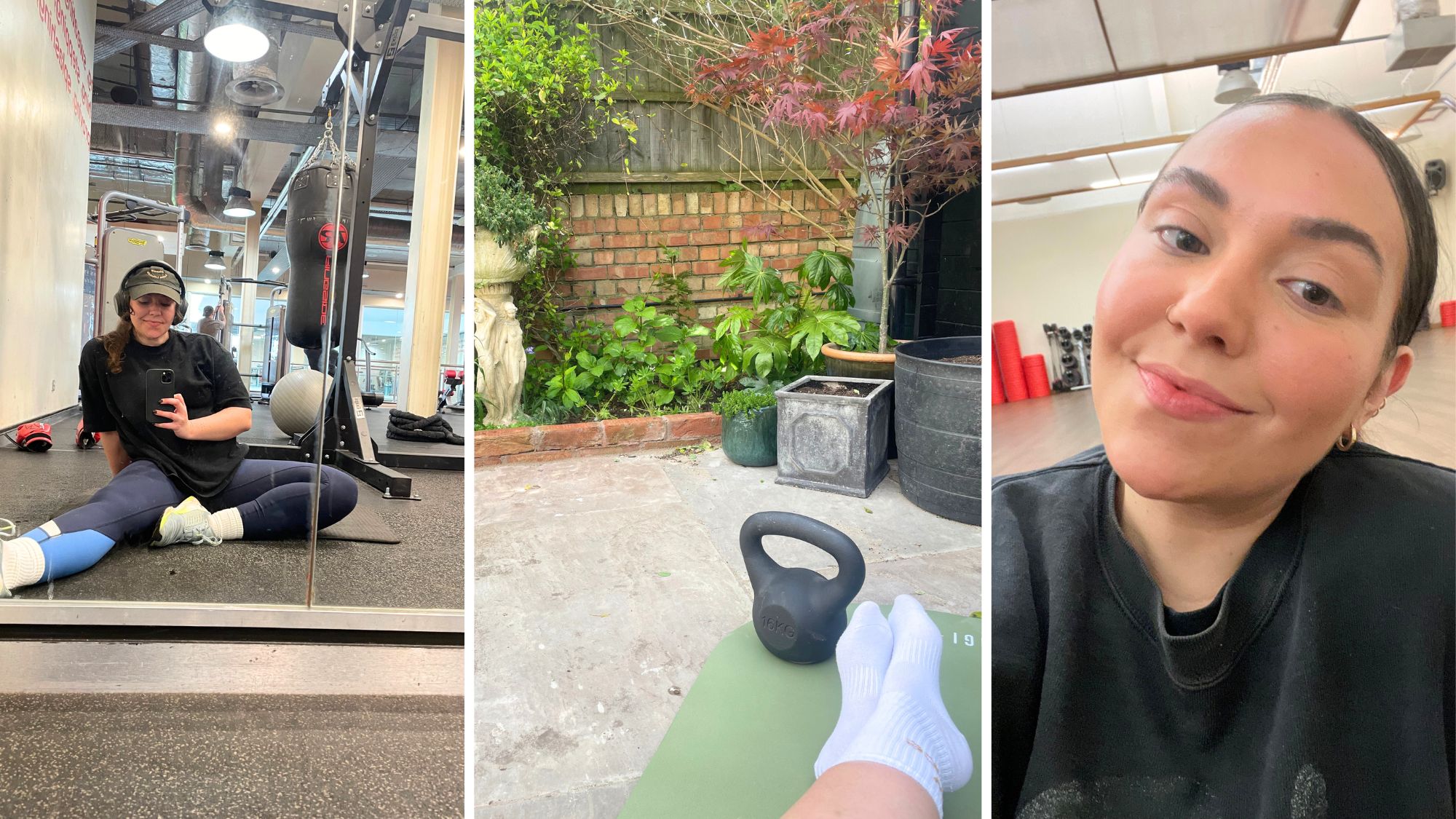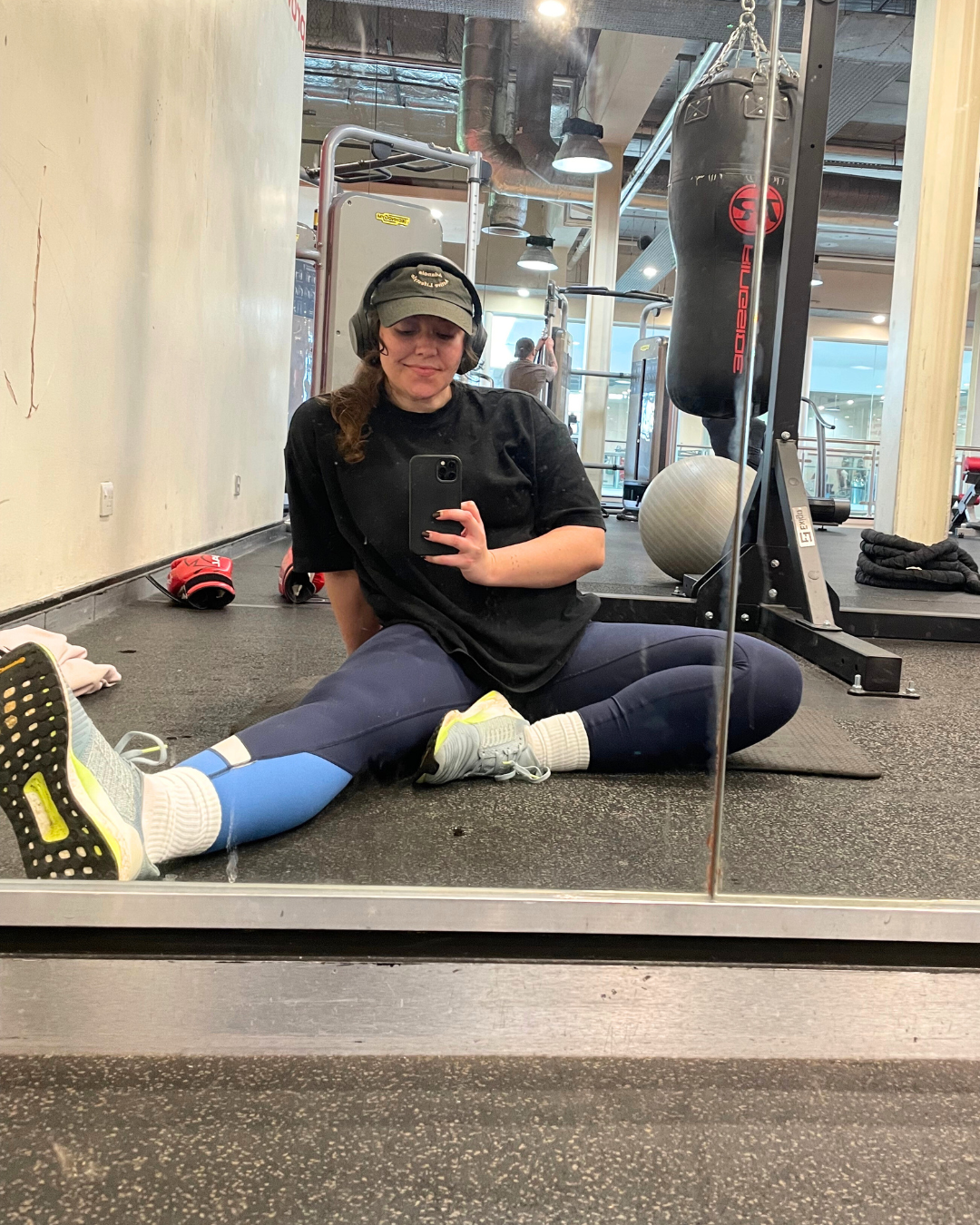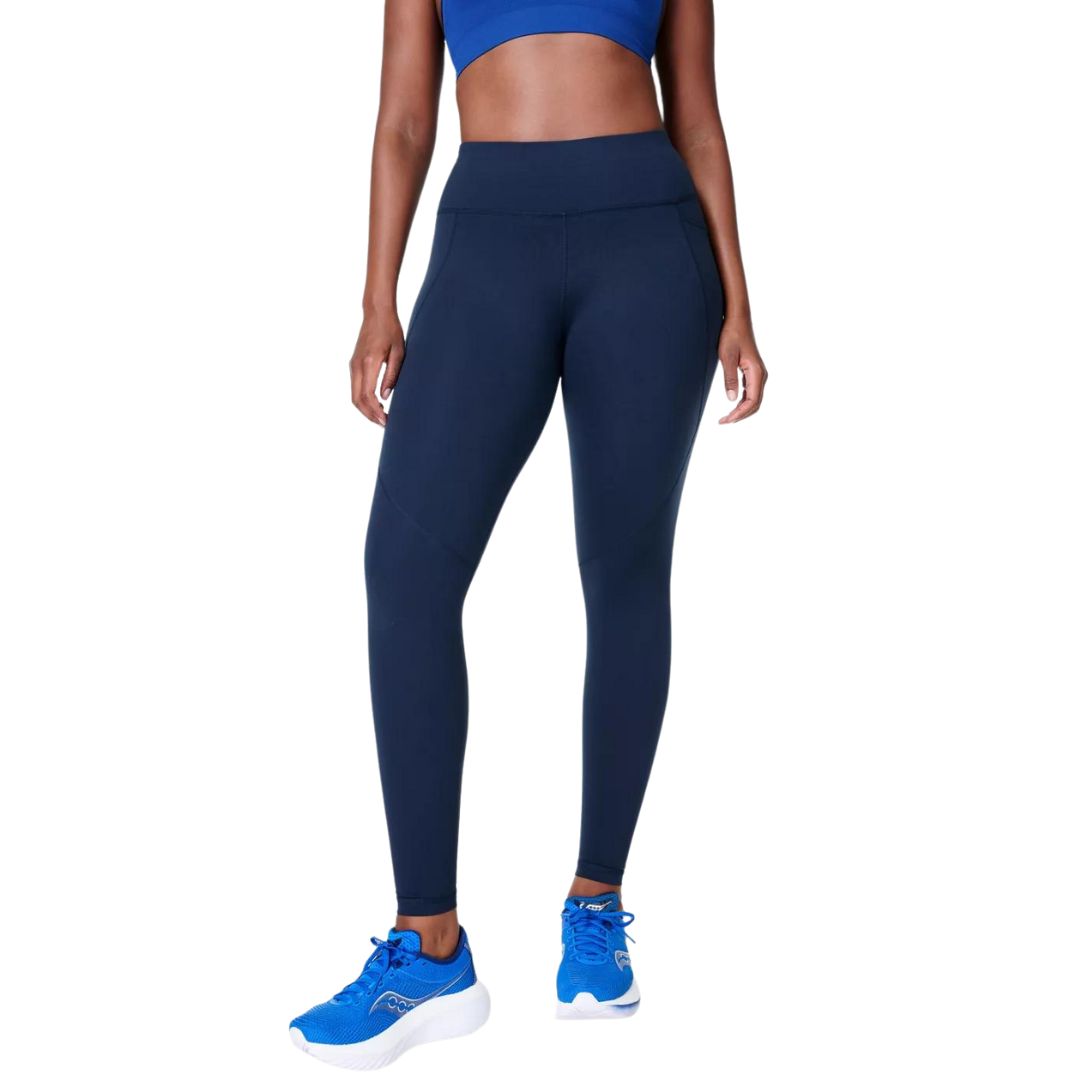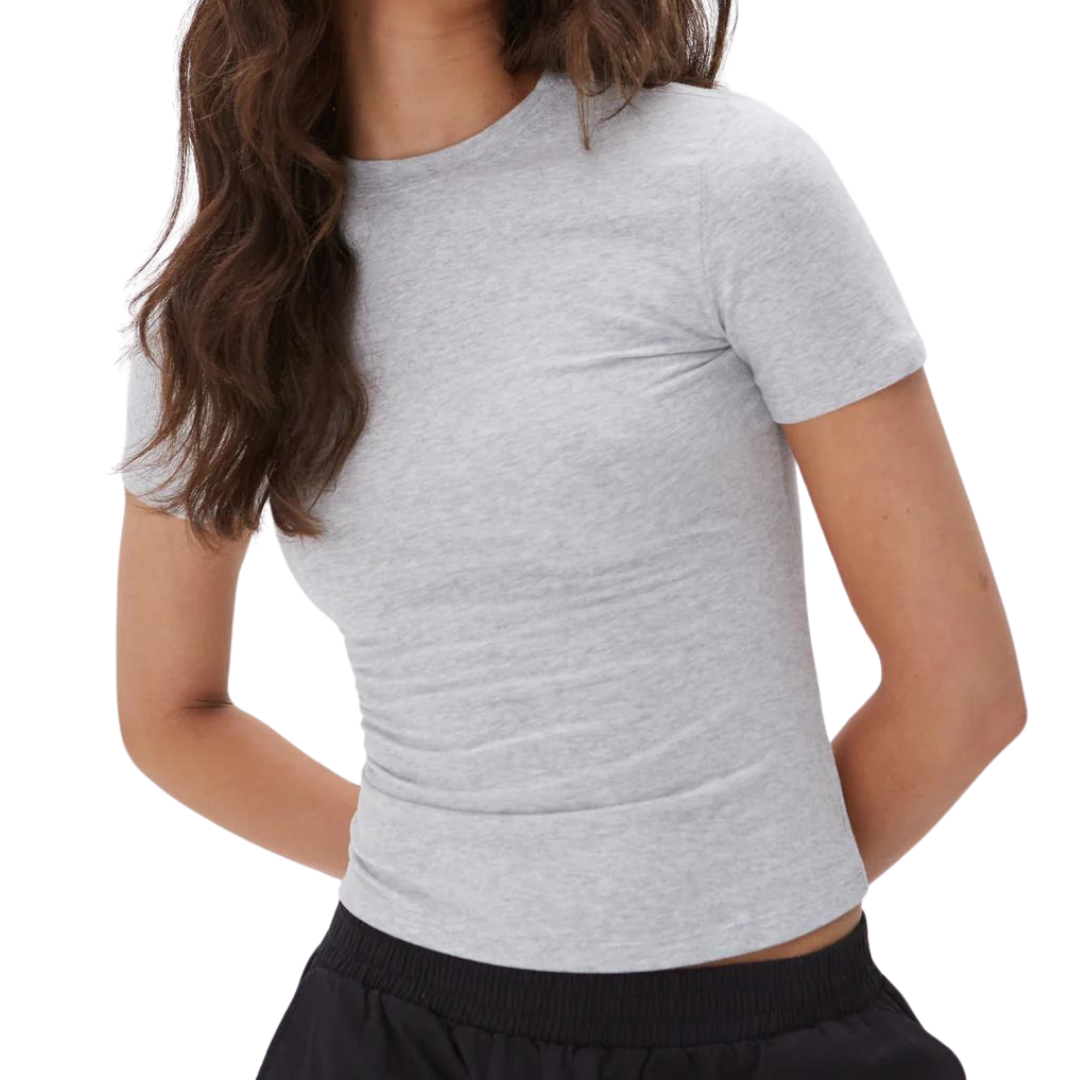I've been doing this simple at-home strength move for three months – and it's massively improved my lower-body strength and stability
Strength, levelled up.


The chapters of my training journey over the past decade can be categorised like Taylor Swift-esque eras. There was the period during which I Irish danced in hours-long classes four times per week; the HIIT phase, where I scowled through seemingly endless sets of burpees; there was the summer I got super into skipping; and the time I made learning to do unassisted chin-ups my entire personality (I succeeded, and then Covid removed both my access to a pull-up bar and my motivation to maintain the skill). As for right now, I’d say I’m in my rediscovery era.
In the years since the pandemic upended our lives, I’ve really struggled to settle into a routine. I’ve moved homes four times, meanwhile my work has become evermore consuming – both in time and energy. I’ve joined and then abandoned three fitness facilities, picked up and then discarded various activities, downloaded and later deleted countless exercise apps. I was desperate to fall back into my former training routine, forgetting that those habits – the frictionless gym workouts, post-session mobility wiggles and daily step counts – were the result of years spent consistently showing up in small ways, constantly tweaking to craft a system that suited me at that time. If I wanted any semblance of structure again, I was going to have to adjust my expectations and start afresh with my new circumstances in mind. This began with the reworking of my home workouts, and the inclusion of an exercise I consider to be massively underrated: step downs.
If there’s one thing I’ve learned during my years of training, it’s that setting the bar too high is a recipe for failure. Long-term habits are formed when we make small and manageable adjustments over time. So, to revamp my routine, I started by sprucing up my at-home strength training; and, in a bid to increase the level of difficulty – because I’m working with limited kit – I introduced step-downs into my sessions. The progress I’ve noticed since – in my strength and muscle mass, yes, but also my stability and even my enthusiasm for working out – has pleasantly surprised me, even with so many years of exercise experimentation under my belt. So, I had to consult a personal trainer whose expertise I consider to be among the most reliable and ask if the many sets of step-downs are actually responsible for my recent gains, or if there’s something else at play.
We've tested a fair few at-home workouts in our time here at MC UK, so do read our reviews of bodyweight squats, goblet squats, and Bulgarian split squats, while you're here, as well as what happened when MC health writers tried strength training every day for 7 days, strength training every other day and planking every day for a week. Keen to work your arms? I tried push ups every day, too.
Step downs every day have transformed my strength - your guide
What are step downs?
PT Andy Vincent explains that a step down is a knee-dominant squat variation, involving ankle, knee and hip flexion, and it therefore targets the same muscles as a squat: the quads, glutes and, because of the degree of hip flexion, the adductors too. “Whereas a step up is forefoot-loaded, forward propulsion mechanics, in a step down we break back and initiate movement down and back into the hip.”
It’s what’s called an eccentric exercise, where the focus is on the lengthening – or lowering – element of the movement.
What are the benefits of step downs?
Aside from the obvious muscle-building benefits of consistently doing step downs, Vincent says there are additional pros to incorporating the exercise into your programme. “A key benefit is that it’s a unilateral movement, so we can work on the strength of the left leg and right leg independently,” he says. “It’s also a really great way to work on your mobility from left to right. We don't probably think about it much but we're going to have massive differences in what the ankle can do, what the knee can do, and what the hip can do as far as mobility and range of motion, so it's a really good way to work through pretty deep range of motion when you get good at them.”
Celebrity news, beauty, fashion advice, and fascinating features, delivered straight to your inbox!
Step downs are also what you might call a function exercise. They mimic everyday movement patterns, and are useful for improving running, jumping and sprint mechanics, as well as being a solid stepping stone for learning more advanced exercises, like pistol squats.
Additionally, you don’t need to load step downs in order to challenge yourself. “Doing an exercise like step downs reduces axial loading of the spine – you don’t have to always put weight on your back when you're doing your squats,” Vincent says.
Who could benefit the most from adding them into their workouts?
If you’re looking to build muscle, strength and improve mobility in the lower body, step downs may be a beneficial addition to your programme. However, Vincent warns that it’s not an exercise that’s suited to everybody – particularly those with poor ankle mobility.
“If someone's got really poor ankle mobility, they're going to struggle to not fall down and bound off that back leg, which misses the point of the exercise,” Vincent explains. “If it just feels like a really hard exercise, despite having a good setup and using a wall for support, that potentially means it's not a great exercise for you, and I would imagine it's the ankle mobility that is letting you down.”
There’s also research to suggest that it’s not always the best exercise for those with limited experience doing eccentric-only movements as it may result in increased delayed onset muscle soreness (DOMs).
That said, if you have decent ankle mobility and you’re keen to give it a go, ease yourself in using a small, sturdy box and a wall for support. If it doesn’t feel good for your body, that’s totally fine – there are plenty of exercises that will.
How do you do step downs properly?
So you can have a solid crack at them, if you so wish, I asked Vincent to walk me through the ideal setup for step downs.
Item one on the agenda is sourcing a box of an appropriate height. “You do not want to be in a situation where you fall at any point in the range of motion,” he says. So, if you're coming down into the step-down motion, and you notice towards the bottom you haven't got the strength to control it and you're falling, you would need to reduce the box height.”
He recommends using a box that’s both firm and stable – ideally a wooden box – so that it’s stable. “It’s not essential, but I think it’s smart to have a wall or something nearby just so you can confidently can stabilise yourself,” Vincent adds. “In an ideal world I'd have the non-working foot against the front of the box as you lower, and maybe a hand just close to a wall as a guide because at first it can feel like more of a balance challenge than a strength challenge.”
Finally: foot position. Vincent says it’s really common for people to point the toe on the way down, but advises against it – if you can help it. “What happens is the toe hits the ground, and because the big toe joint is so integrated into running, sprinting and walking mechanics, that big toe is going to want to initiate the drive back up,” he explains. “A really smart, but quite challenging, thing to learn to do is to try and go heel down so the toes are high, touch the heel to the floor and then drive back up, because you'll be less likely to initiate a push off when the heel strikes the floor.”
I tried step downs for three months – and have noticed serious benefits
Months one to two
I’m doing single-leg deadlifts using a 16kg kettlebell in my living room during a morning strength session and (and this isn’t intended to be a humble brag by any means!) I barely break a sweat. I clean the kettlebell into a rack position and attempt a few squats. I’ve ramped up the difficulty, yes, but the biggest challenge becomes maintaining tension in my upper body to keep the weight racked and remain stable though the load is offset. Because I can’t manage as many reps without compromising form, I don’t feel my lower-body muscles engage as I want them to. To be clear, these aren’t interchangeable exercises – they involve two separate movement patterns – but what I’m looking for right now, more than anything, is to figure out a way to challenge my lower body while working out at home and without resorting to high rep ranges (I don’t have the time or the patience, frankly).
I could experiment with tempo, of course, but I only have a small collection of kit so I’m limited with how much I can load exercises. A brainwave – and a flashback of a stair-heavy hike I did in Madeira last year – sends me into the kitchen to retrieve the collapsible stool I use to facilitate my reaching of tins and jars from impossibly high cabinets, and I play around with sets of step ups and step downs. I want to emphasise here that a plastic foldable step is not a sensible choice of equipment, and categorically do not recommend. Nevertheless, I choose to risk it, and am surprised at how challenging the step-downs feel.
Having not been a part of my routine for years, I’d forgotten the coordination, control and strength required to complete solid reps, and how you feel your quads and glutes working throughout. Immediately promoted to my favourite exercise of the moment, step-downs become a regular feature in my strength training sessions – both at home and in the gym.
When I’m training at the gym, I experiment with different box heights, tempos and rep ranges – I also try supersetting step downs with other lower body exercises, and over time feel my body become stronger in the movement. After a few weeks of doing them a couple of times a week, I think I notice that my right ankle – which I sprained quite badly two years ago – feels… more stable. And also more mobile. It stopped causing me pain fairly soon after the accident, but for a long time my movement felt quite restricted, and I lacked confidence which caused me to eliminate exercises and activities I thought might risk a repeat injury. There are, obviously, many reasons my ankle may feel further along in its recovery – not least the passing of time – but something feels somehow improved since I started regularly doing step-downs, so I ask Vincent if it’s possible they could be rehabbing the joint.
“I can understand the biomechanics behind why this particular exercise might lend itself to improving ankle stability – though, what we’re actually talking about is the functional capacity of the foot to pronate, and for those joints to move in a sequence that they're supposed to be able to, but often in life they're not,” he says. When you’re on two feet, he explains, you can push weight out and supinate the ankle. “In a step down, you don't have the capacity to do that – your ankle will do whatever the hell it wants to do. So, you'll be working on pronation mechanics. The arch of the foot will sink into the surface of the step as the shin travels forward, the subtalar joint will sit below, the shin will internally rotate.
And what that does is it creates a cascade of movements up the chain, improving the tibia and fibula’s (the shin bones) ability to rotate inward. And that will also affect the ability of the hip socket to rotate inward as well.”
He suggests that this was perhaps the missing link in my recovery, since not many exercises facilitate this type of movement outside of single leg squat variations (which I confess I often try to avoid).

Abbi during month one of her step down challenge
Month three
I’m setting up for some step downs in the gym, having just finished a few sets of barbell deadlifts, and I audibly gasp when I catch my side profile in the mirror. They weren’t exactly petite prior to switching up my training routine, but it seems to me – though, I’m not wearing my glasses – that there have been some serious hypertrophic goings on in my glutes. Basically, I’ve built muscle in my lower body, and while there have been a few changes to my training recently – I’m exercising more consistently, for starters – step downs are one of a very few exercises new to my routine, everything else – the deadlifts, gob squats, and so on – I’ve been doing week in, week out for years. Is it possible that doing step downs has helped to grow my peach?
Because there are so many variables, it’s impossible to say for sure, according to Vincent. But, it’s feasible. “Let's say, for argument's sake, you had standardised the workload that you were doing, and then you introduced step downs. What you've done is you've increased the total training volume, so the total amount of sets that you're doing per week on your glutes and your quads,” he says. “Therefore, that increase in total set volume would be 100%. This, in theory, would increase the amount of potential you had to develop the tissue on those muscles.”
Additionally, there’s the fact that squat variations change how you train your glutes. “With a step down, you've got a foot stance that's narrow,” Vincent explains. “Regional hypertrophy, which basically means that if you alter these joint angles you can target specific muscle fibres within the same bundle of a muscle, means that this might have an impact too.”
Essentially, while my glute gains could absolutely be linked to my many reps of step downs in recent months, it’s most likely that they’re a result of the novelty of training the muscle in a new way, and that I’ve been more consistent with my lower body workouts, full stop. Regardless, they’ll be sticking around in my sessions for a while yet.
Shop MC UK's go-to strength training essentials now

Abbi Henderson is a freelance journalist and social media editor who covers health, fitness, women’s sport and lifestyle for titles including Women's Health and Stylist, among others.
With a desire to help make healthcare, exercise and sport more accessible to women, she writes about everything from the realities of seeking medical support as a woman to those of being a female athlete fighting for equality.
When she’s not working, she’s drinking tea, going on seaside walks, lifting weights, watching football, and probably cooking something pasta-based.


